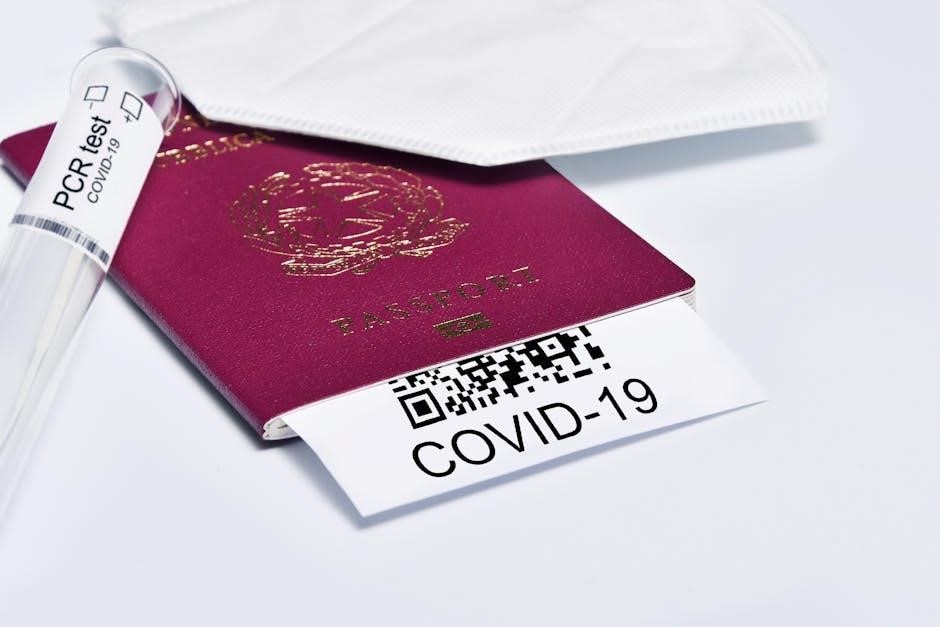and templates effectively always.

Overview of Incident Response Plan Testing
Incident response plan testing is a crucial process that helps identify weaknesses in the plan, using methods such as tabletop exercises to simulate real-life scenarios and evaluate preparedness. This process involves discussing and analyzing potential incidents, and testing the plan’s effectiveness in responding to them. By testing the incident response plan, organizations can improve their ability to respond to and manage incidents, reducing the risk of damage and minimizing downtime. The testing process typically involves a series of steps, including identifying potential incidents, developing scenarios, and conducting exercises to test the plan’s effectiveness. This process helps organizations to validate their incident response plan and ensure that it is effective in responding to incidents. The goal of incident response plan testing is to ensure that the plan is effective and that the organization is prepared to respond to incidents.
Definition of Tabletop Exercises
A tabletop exercise is a discussion-based activity that simulates a realistic scenario, allowing participants to practice and refine their response to a hypothetical incident. According to the NIST glossary, a tabletop exercise is a facilitated discussion of a simulated situation or incident. This type of exercise is designed to test an organization’s incident response plan and identify areas for improvement. Tabletop exercises typically involve a small group of participants, who gather to discuss and respond to a simulated incident, using a scenario-based methodology. The exercise is usually facilitated by a moderator, who guides the discussion and ensures that all aspects of the incident response plan are tested. The goal of a tabletop exercise is to evaluate and improve an organization’s incident response capabilities, in a low-stress and controlled environment, using a variety of scenarios and discussion questions. This helps to identify gaps and weaknesses.

Benefits of Tabletop Exercises
Tabletop exercises enhance cybersecurity readiness and incident response capabilities, identifying weaknesses and improving plans, using
effective methods
and scenarios always and very effectively online.
Improving Incident Response Plan
Improving incident response plans is crucial for effective cybersecurity, and tabletop exercises play a significant role in this process, using
scenario-based methodologies
to identify gaps and weaknesses, and
customizable packages
to enhance preparedness and response; By testing incident response capabilities, organizations can evaluate and refine their plans, ensuring they are better equipped to handle real-life cyber attacks. This process involves discussing and simulating various scenarios, including
incident response and post-incident activities
, to improve overall cybersecurity readiness. Through tabletop exercises, organizations can strengthen their incident response plans, validate effective policies and procedures, and identify critical gaps or weaknesses, ultimately enhancing their ability to respond to and manage cyber incidents effectively and efficiently always and online.
Enhancing Cybersecurity Readiness
Enhancing cybersecurity readiness is a key benefit of tabletop exercises, which simulate real-life cyber attack scenarios to evaluate and improve an organization’s preparedness and response. By participating in these exercises, organizations can identify gaps and weaknesses in their cybersecurity posture and develop strategies to address them, using
template exercise objectives
and
discussion questions
to guide the process. Tabletop exercises also provide an opportunity for organizations to test their incident response plans and procedures, ensuring they are effective and efficient in the event of a real cyber attack. This helps to enhance cybersecurity readiness and reduce the risk of a successful attack, ultimately protecting an organization’s assets and reputation, and allowing them to respond quickly and effectively to any cyber incident that may occur, and to improve their overall cybersecurity posture always and online effectively.

Resources for Tabletop Exercises
Resources include CISA Tabletop Exercise Packages and Exercise Planner Handbook for planning and executing exercises effectively always online using customizable templates and scenarios provided.
CISA Tabletop Exercise Packages
CISA Tabletop Exercise Packages are customizable and include template exercise objectives, scenarios, and discussion questions, as well as a collection of references and resources for planning and execution.
Each package provides scenario and module questions to discuss pre-incident information and intelligence sharing, incident response, and post-incident activities, helping to evaluate and enhance cybersecurity readiness.
The packages are designed to be flexible and adaptable to different organizations and their specific needs, allowing for a tailored approach to tabletop exercises.
By using CISA Tabletop Exercise Packages, organizations can ensure a comprehensive and effective tabletop exercise that tests their incident response capabilities and identifies areas for improvement, ultimately strengthening their cybersecurity posture and readiness to respond to incidents.
These packages are a valuable resource for organizations seeking to improve their incident response planning and preparedness, and can be used in conjunction with other resources and tools to enhance cybersecurity readiness.
Exercise Planner Handbook
The Exercise Planner Handbook is a guide for exercise planners, providing step-by-step instructions on how to plan, develop, and execute a tabletop exercise.
This document is distributed to designated planners and outlines the necessary steps to ensure a successful exercise.
The handbook includes information on setting objectives, developing scenarios, and facilitating discussions, as well as tips for creating a realistic and engaging exercise.
By using the Exercise Planner Handbook, planners can create a comprehensive and effective tabletop exercise that meets the needs of their organization.
The handbook is a valuable resource for exercise planners, helping to ensure that the tabletop exercise is well-planned and executed, and that it achieves its intended goals.
It provides a framework for planning and conducting a tabletop exercise, and can be used in conjunction with other resources, such as CISA Tabletop Exercise Packages, to enhance the exercise planning process.

Best Practices for Tabletop Exercises
Best practices involve validating policies and procedures, strengthening team relationships, and identifying gaps in disaster recovery efforts using
effective planning and execution methods always.
Incident Management and Planning
Incident management and planning is crucial for effective incident response, and tabletop exercises play a key role in this process, allowing teams to practice and refine their skills in a simulated environment, using customizable packages and templates to test their incident response plans, and identify areas for improvement, with the goal of enhancing their overall cybersecurity readiness and response capabilities, and ensuring they are well-prepared to respond to a real-world cyber incident, by evaluating and improving their incident management and planning processes, and strengthening their relationships with team members and partners, to ultimately improve their incident response capabilities and reduce the risk of a successful cyber attack, and minimize the impact of a security incident, through effective planning and execution of tabletop exercises, and continuous improvement of their incident response plans and procedures, always.
SecurityScorecard Incident Response Tabletop Exercise
The SecurityScorecard Incident Response Tabletop Exercise is a scenario-based methodology that tests a team’s cyber readiness against a real-world cyber incident, using a simulated environment to practice and refine their skills, and identify gaps in their incident response plan, with the goal of strengthening and sharpening their response capabilities, and minimizing the impact of a security incident, through continuous improvement of their incident response plans and procedures, and evaluation of their preparedness and response to a cybersecurity incident, the exercise provides a comprehensive approach to incident response, allowing teams to validate effective policies and procedures, and strengthen relationships with team members and partners, to ultimately improve their incident response capabilities, and reduce the risk of a successful cyber attack, by using the SecurityScorecard Incident Response Tabletop Exercise, teams can ensure they are well-prepared to respond to a real-world cyber incident, always.



